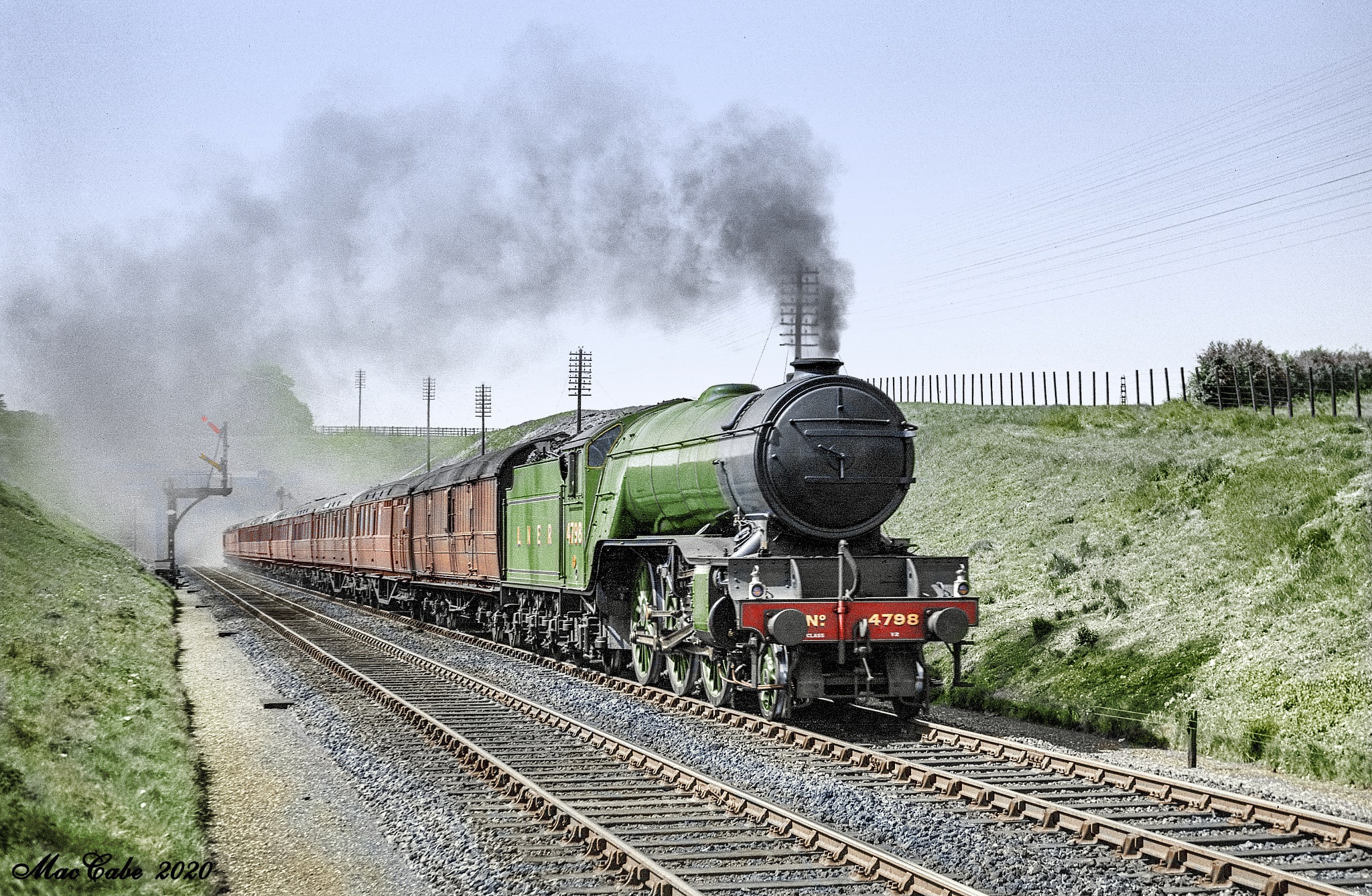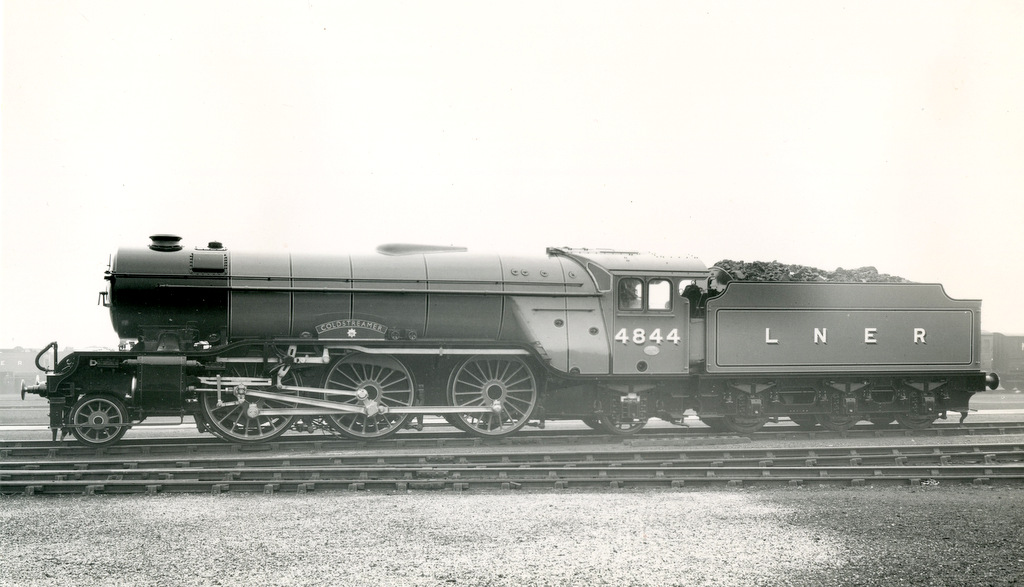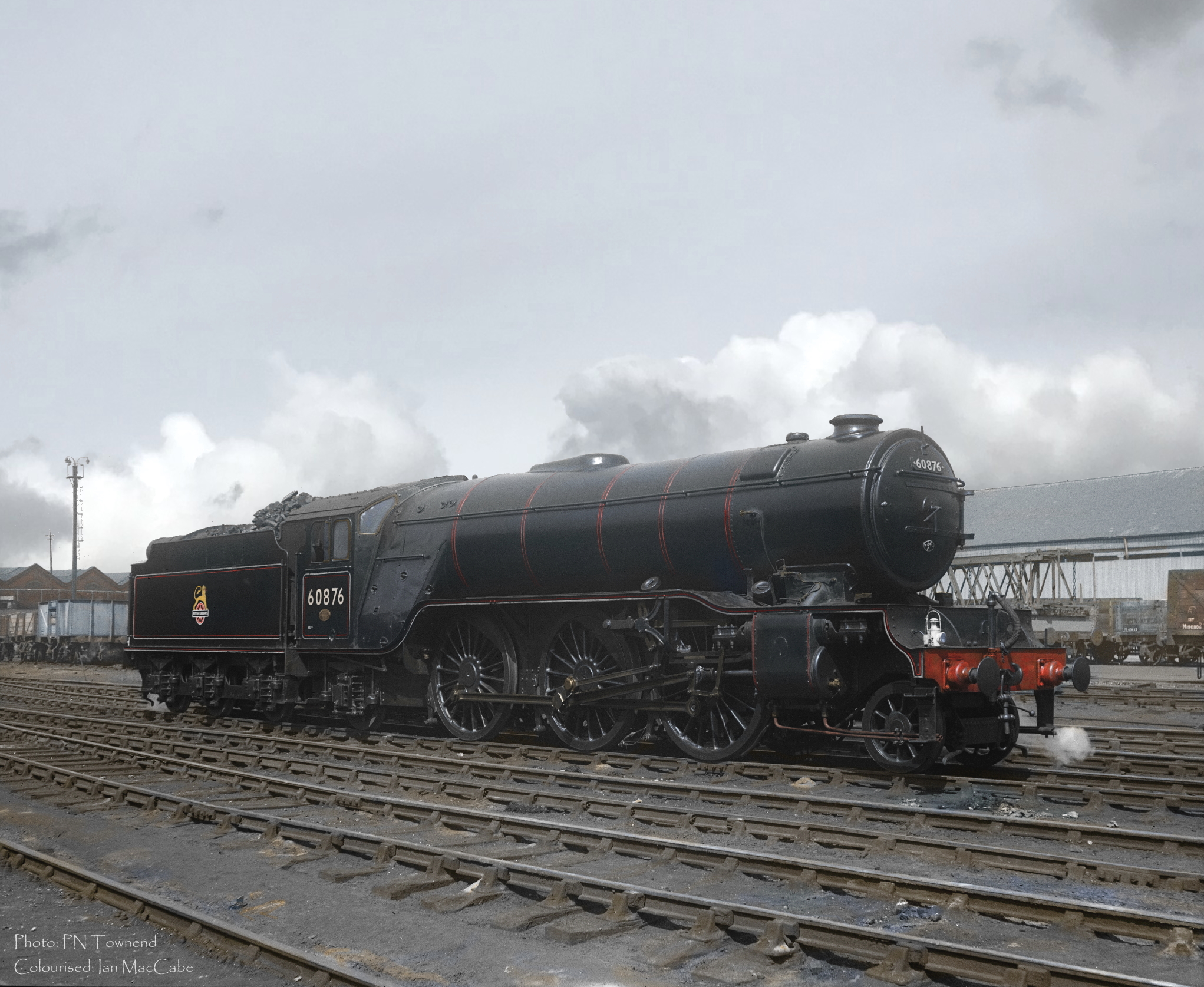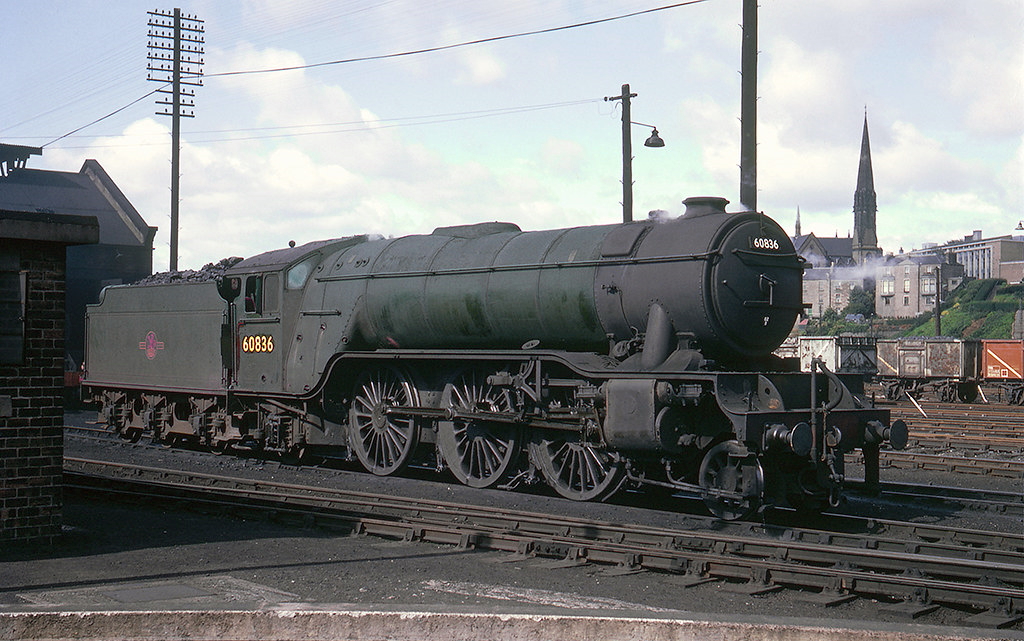Your cart is currently empty!
Sir Nigel Gresley
Sustaining the legacy

Class V2
The London and North Eastern Railway class V2 2-6-2 steam locomotives were designed in 1936 by Sir Nigel Gresley for express mixed traffic work.

The class V2s were the only major class of 2-6-2 tender locomotives used in Britain. The wheel arrangement allowed the fitting of a large firebox uninhibited by the rear driving wheel, and the front pony truck improved stability at high speeds. The V2 was derived from the Class class A1/A3 Pacifics with smaller driving wheels of 6ft 2in and a shortened boiler. It retained Gresley’s favoured three-cylinder arrangement and unusually all three cylinders were part of a single ‘monobloc’ casting.
184 locomotives were built in 14 batches between 1936 and 1944 at Doncaster and Darlington Works, construction continuing through the Second World War. A further four locomotives, ordered as class V2s, were redesigned by Gresley’s successor Edward Thompson and completed as LNER Thompson class A2/1 Pacifics.


The class V2 was a versatile locomotive, capable of hauling fast fitted freights and express passenger trains. Their relatively heavy 22 ton axle load meant their use was restricted to around 40% of the LNER’s route miles. Gresley recognised that a lighter mixed-traffic locomotive was required, and the class V4 class was designed to this end. However, it was to be the versatile Thompson class B1 4-6-0 which succeeded the class V2 as the LNER’s standard mixed traffic locomotive, although the class B1 never matched the class V2’s power output.
First of the initial batch for five Doncaster-built class V2s was No. 4771, which emerged in June 1936 and was promptly named Green Arrow, after the express freight service for which the locomotives had been built. Successful trials with this quintet led to both Doncaster and Darlington works producing further batches. The final locomotive, No. 3695, was delivered from Darlington in July 1944.


The class V2 had the free steaming qualities that the LNER’s operating department required. Not only were they capable of working vacuum braked freights at up to 60 mph, they could deputise for Pacifics on express passenger schedules. In peak condition a class V2 could almost match the Pacifics for sustained high speed running. One locomotive was reliably timed at 93 mph on the ‘Yorkshire Pullman’ while another attained 101.5 mph on a test train.
The class V2s were recognised as versatile and powerful locomotives by 1939, but their reputation was more firmly established by their remarkable feats of haulage during World War II. Trains of over 20 carriages loaded to over 700 tons proved within their abilities. On one occasion a single class V2 hauled 26 coaches from Peterborough to London. The class V2s performed equally competently for British Railways, leaving their mark on the East Coast Main Line, the Waverley Route between Carlisle and Edinburgh and on the ex-Great Central main line between London Marylebone and Sheffield.


In 1946 a series of derailments was traced to the design of the leading pony truck, which was unduly sensitive to the often poor track conditions, a legacy of heavy wartime use and lack of maintenance. Modifications to the suspension cured the problem. During the 1950s cracks in the three-cylinder monoblocs became increasingly frequent, and in 1956 the decision was taken to replace the monobloc with separate cylinder castings. Seventy-one locomotives were thus modified and can be identified by the presence of external steam pipes from smokebox to cylinders. Finally, around 1960 experiments were made with fitting double chimneys to two class V2s. This yielded no significant performance gain, but eight locomotives were subsequently fitted with Kylchap exhausts. These class V2s were reckoned to be fully equal in performance to the larger Pacifics. However, plans to fit Kylchap chimneys to the remainder of the class were abandoned once it became clear that replacement with diesel locomotives was imminent.
Only eight class V2s were named; seven by the LNER and one by BR. The first of the class was named after the express freight train ‘Green Arrow’. Five more were named after Regiments and two after public schools.
Original No. BR No. Name Notes
No. 4771 60800 Green Arrow Preserved
No. 4780 60809 The Snapper, The East Yorkshire Regiment, The Duke of York’s Own
No. 4806 60835 The Green Howard, Alexandra, Princess of Wales’s Own Yorkshire Regiment
No. 4818 60847 St Peter’s School York AD627
No. 4831 60860 Durham School
No. 4843 60872 King’s Own Yorkshire Light Infantry
No. 4844 60873 Coldstreamer
No. 3676 60964 The Durham Light Infantry Named in April 1958

When built, the class V2s were numbered No. 3641–3695 and No.4771–4899. Under the LNER 1946 renumbering scheme they were to be renumbered No. 700-883 but the range No. 800–983 was allocated before renumbering was completed (19 locomotives briefly carried numbers in the original range). After nationalisation in 1948, British Railways added 60000 to their numbers so they became No. 60800–60983. BR also gave them the power classification 6MT.
The class V2s’ swansong came on the Edinburgh—Aberdeen run, working alongside the last LNER class A2s and class A4s. All 184 class V2s were withdrawn between February 1962 and December 1966. The last ones in service were No. 60831 and No. 60836 had the distinction of being Gresley’s last big engines to be in service. No. 60831 and No. 60836 were withdrawn on 6th December 1966 and 31st December 1966 respectively. Both of them were scrapped the following year.


The surviving class V2 No. 4771/60800 Green Arrow was withdrawn in August 1962 from King’s Cross shed. Part of the National Collection and after many years of main line operation is now on display at the Danum Museum, Doncaster.
